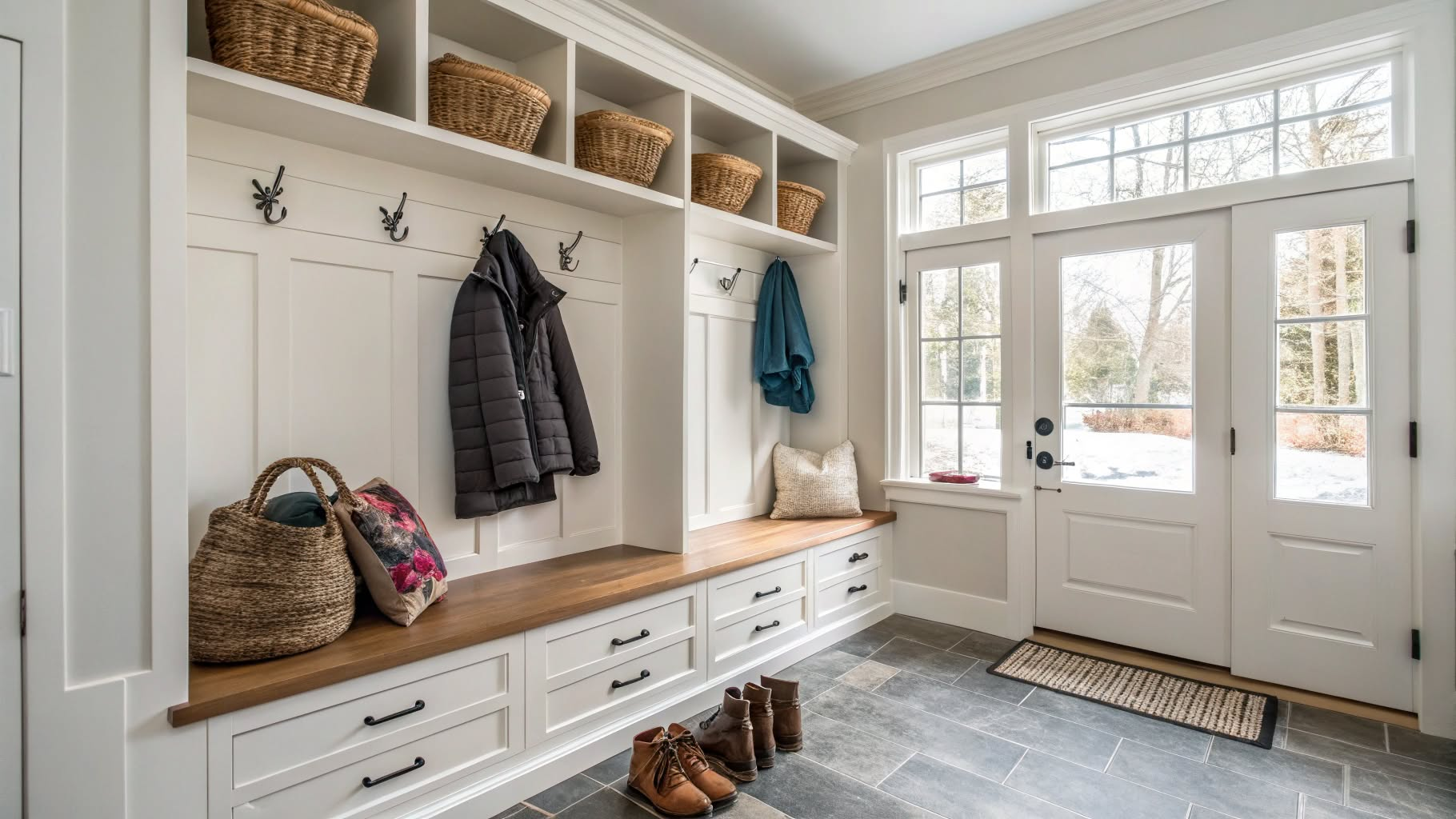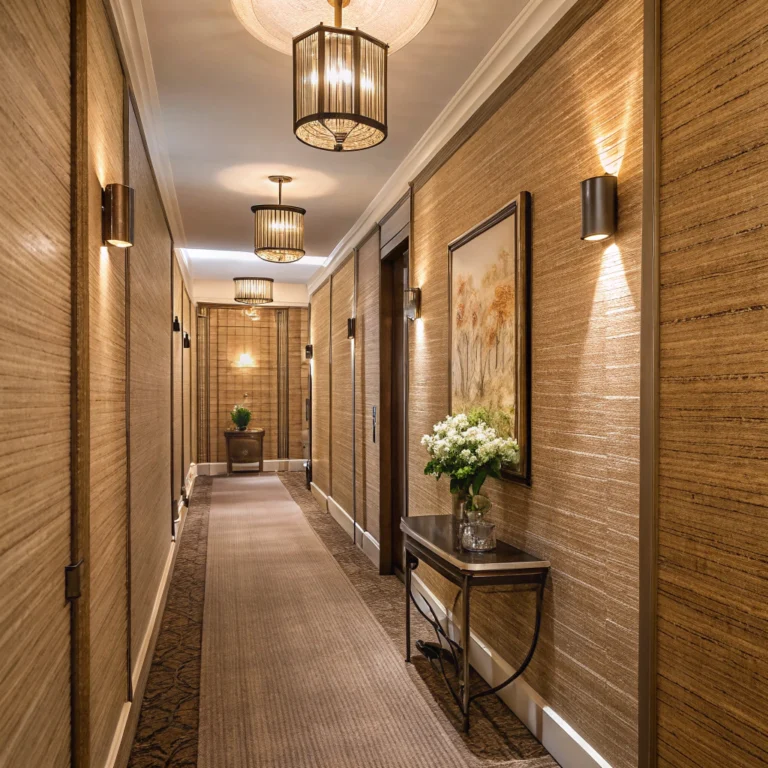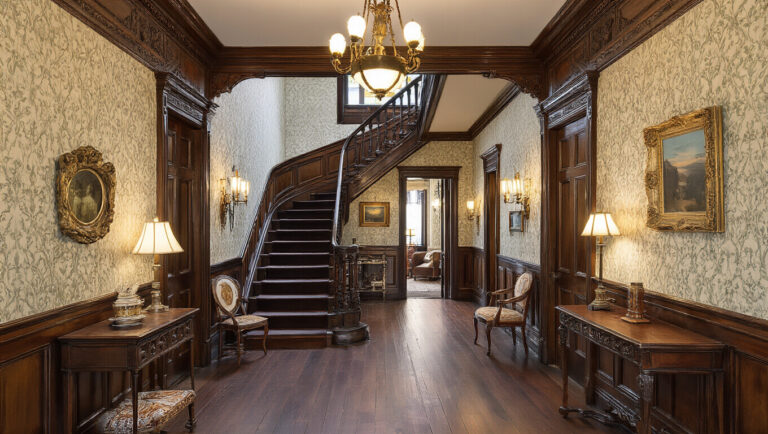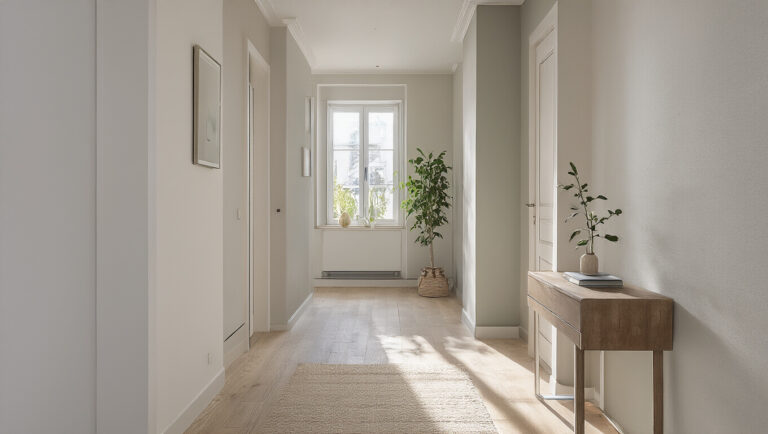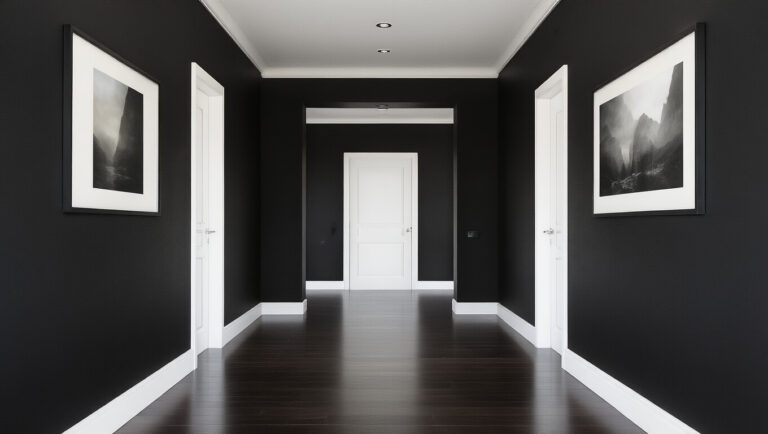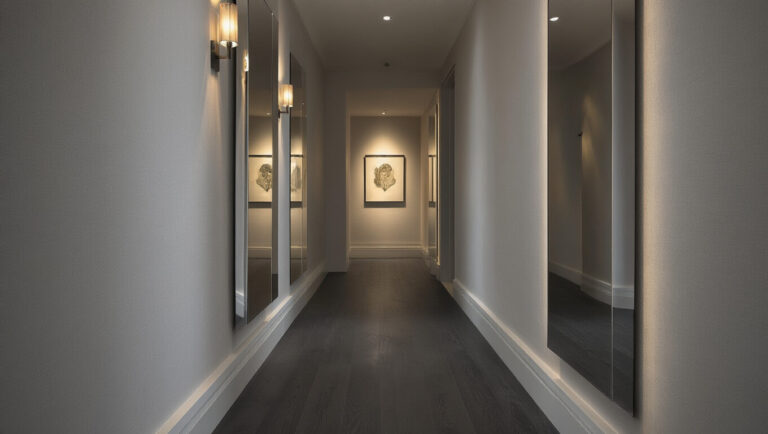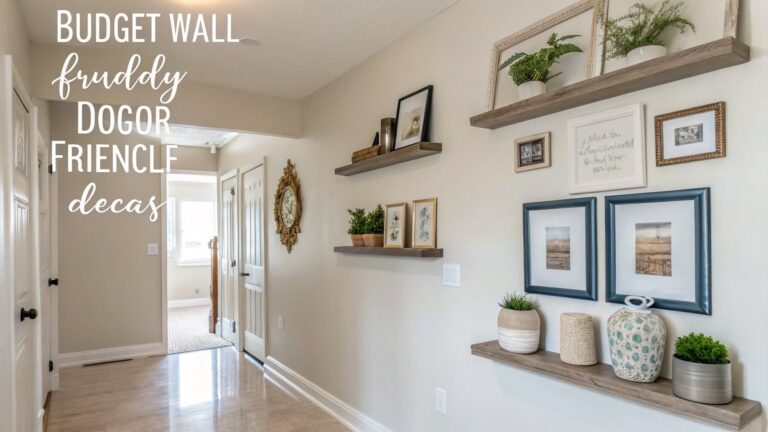Mudroom Entryway Perfect Storage Solutions
The mudroom—that transitional space between the outside world and your home’s interior—serves as both the first welcome and last goodbye to your living space each day. Yet for many homeowners, this crucial area often becomes a chaotic collection of discarded shoes, dropped bags, and hastily hung coats.
A well-designed mudroom entryway does more than just prevent dirt from tracking through your home; it creates an organizational system that supports your daily routines and establishes a sense of order from the moment you walk through the door. Whether you’re working with a dedicated mudroom, a hallway nook, or simply a wall near your most-used entrance, thoughtful storage solutions can transform this high-traffic area into a functional, stress-reducing space that sets the tone for your entire home.
In this comprehensive guide, we’ll explore creative and practical storage options for mudrooms of all sizes, helping you design an entryway that not only contains clutter but actually enhances your home’s efficiency and aesthetic appeal. From built-in cabinetry to clever DIY solutions, you’ll discover how to maximize every inch of your entryway while creating a space that welcomes you home.
Assessing Your Mudroom Needs: The Foundation of Effective Storage
Before diving into specific storage solutions, take time to analyze how your household actually uses your entryway. This thoughtful assessment forms the backbone of a mudroom that truly works for your lifestyle rather than against it. Start by observing traffic patterns over several days: Which family members use which entrance? What items consistently accumulate in this space? Are seasonal sports equipment, pet supplies, or children’s backpacks regular features? Understanding these patterns will help you prioritize storage needs specific to your household.
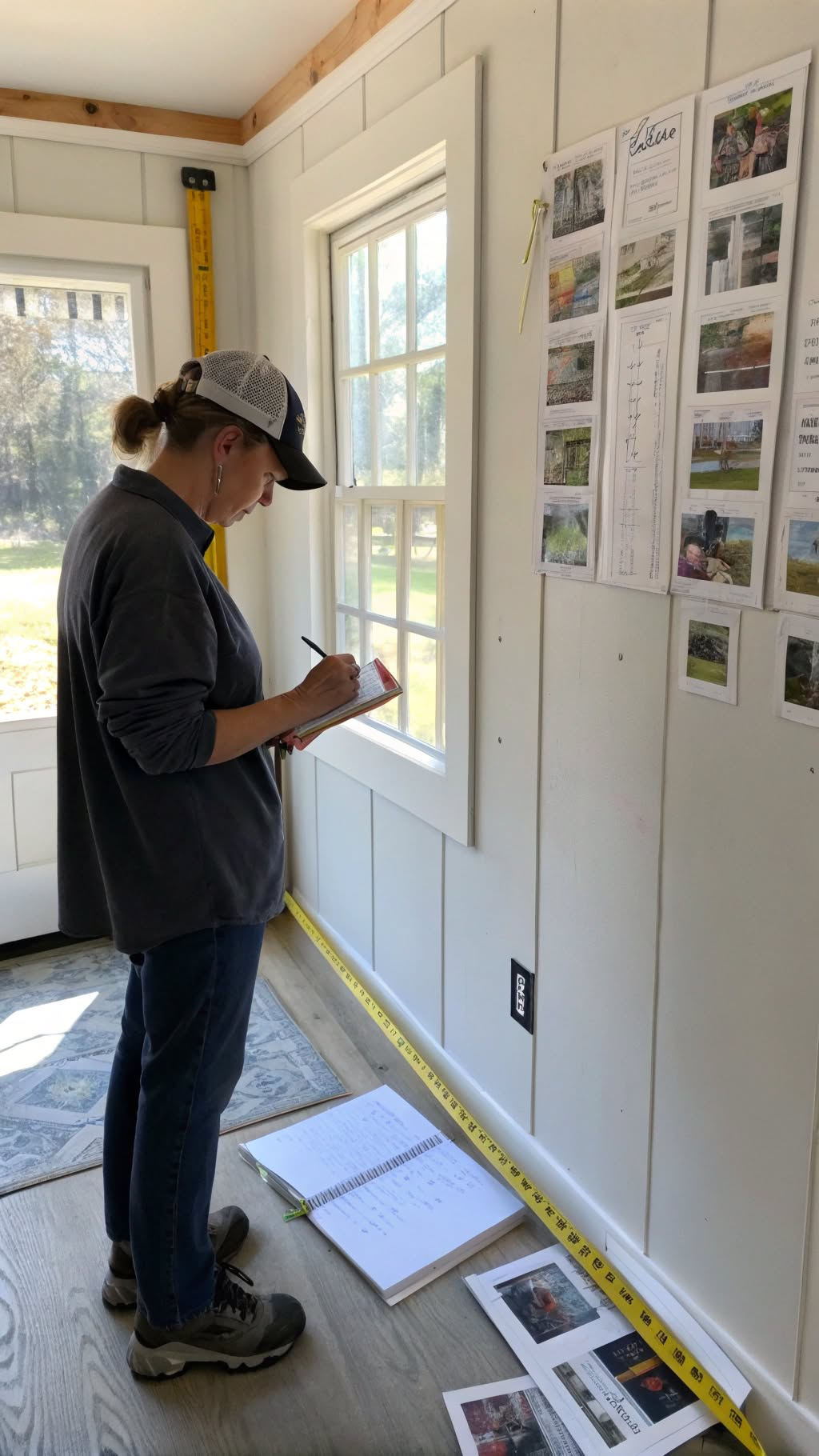
Consider both your immediate and long-term storage requirements. Daily essentials like keys, wallets, and phones need accessible, designated spots to prevent frantic morning searches. Seasonal items—from winter boots to summer beach bags—require different solutions that allow for rotation throughout the year. Take measurements of your available space, noting any architectural features like windows, doors, or existing built-ins that might impact your design. Pay special attention to ceiling height, as vertical storage often provides untapped potential in smaller spaces. If your mudroom serves multiple functions—perhaps doubling as a laundry area or home office nook—factor these needs into your planning from the beginning.
Finally, be honest about your family’s organizational habits. The most beautiful custom cabinetry won’t help if it doesn’t align with how people naturally behave. If your children always drop backpacks on the floor, a low hook might be more effective than an overhead shelf. If your partner collects hats, an accessible display solution might prevent them from piling up on every available surface. By designing around your family’s actual behaviors rather than idealized habits, you’ll create a mudroom system with staying power—one that maintains its organization long after the initial setup.
Vertical Storage Solutions: Maximizing Wall Space for Ultimate Organization
When floor space comes at a premium, your walls become valuable real estate for mudroom storage. A well-planned vertical storage system can transform even the narrowest entryway into an organizational powerhouse. Wall-mounted hooks represent perhaps the simplest yet most effective starting point. Install them at varying heights to accommodate both adults and children, ensuring everyone can independently hang their belongings. Consider decorative hook boards, industrial-style pipe systems, or hidden folding hooks that maintain a sleek appearance when not in use. For frequently used items, open visibility often translates to better organization—what you can see, you’ll actually use.
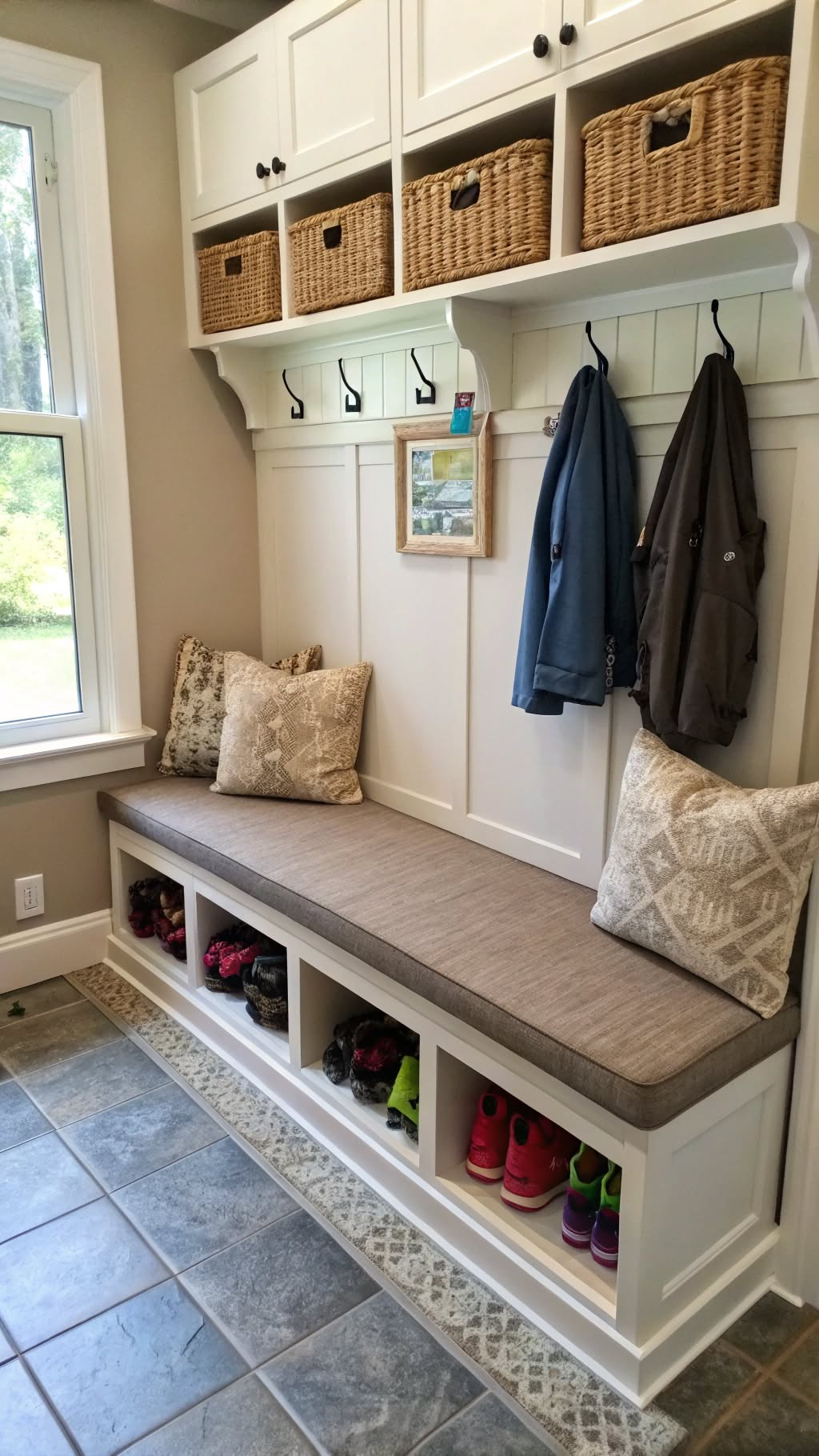
Open shelving creates flexible storage that adapts to changing needs while keeping essentials visible and accessible. Floating shelves offer a modern, space-efficient option without the visual weight of traditional cabinetry. Style them with labeled baskets to corral smaller items while maintaining a cohesive look. For a more structured approach, wall-mounted cubbies provide individualized storage zones—assign one to each family member to contain personal items and eliminate the “whose is this?” dilemma. The vertical space above hooks or benches offers perfect positioning for additional shelving, creating a complete storage wall that utilizes every available inch from floor to ceiling.
Don’t overlook the storage potential of your mudroom door itself. Over-the-door organizers, hook systems, or even slim pocket organizers can add substantial capacity without consuming precious floor or wall space. For narrow entryways, consider installing a pegboard wall system that allows for completely customizable arrangements of hooks, small shelves, and accessories. This adaptable solution can evolve alongside your family’s changing needs. Remember that vertical storage success depends on accessibility—items used daily should remain within easy reach, while seasonal or occasional items can be stored in higher positions. With thoughtful planning, your mudroom walls can work harder than you ever imagined, keeping essentials organized while freeing up valuable floor space.
Bench and Cubby Systems: The Heart of Functional Mudroom Design
The mudroom bench represents more than just a place to sit—it’s the cornerstone of a truly functional entryway system. This multitasking feature provides a comfortable spot for removing shoes, creates a natural boundary between outdoor and indoor spaces, and offers substantial storage opportunities beneath and above its surface. When selecting or designing a mudroom bench, consider both height and depth carefully. The ideal bench allows adults to sit comfortably with feet flat on the floor while providing enough depth to accommodate winter boots underneath. Materials matter too—look for durable, easy-to-clean surfaces like solid wood, laminate, or moisture-resistant upholstery that can withstand daily wear and seasonal elements.
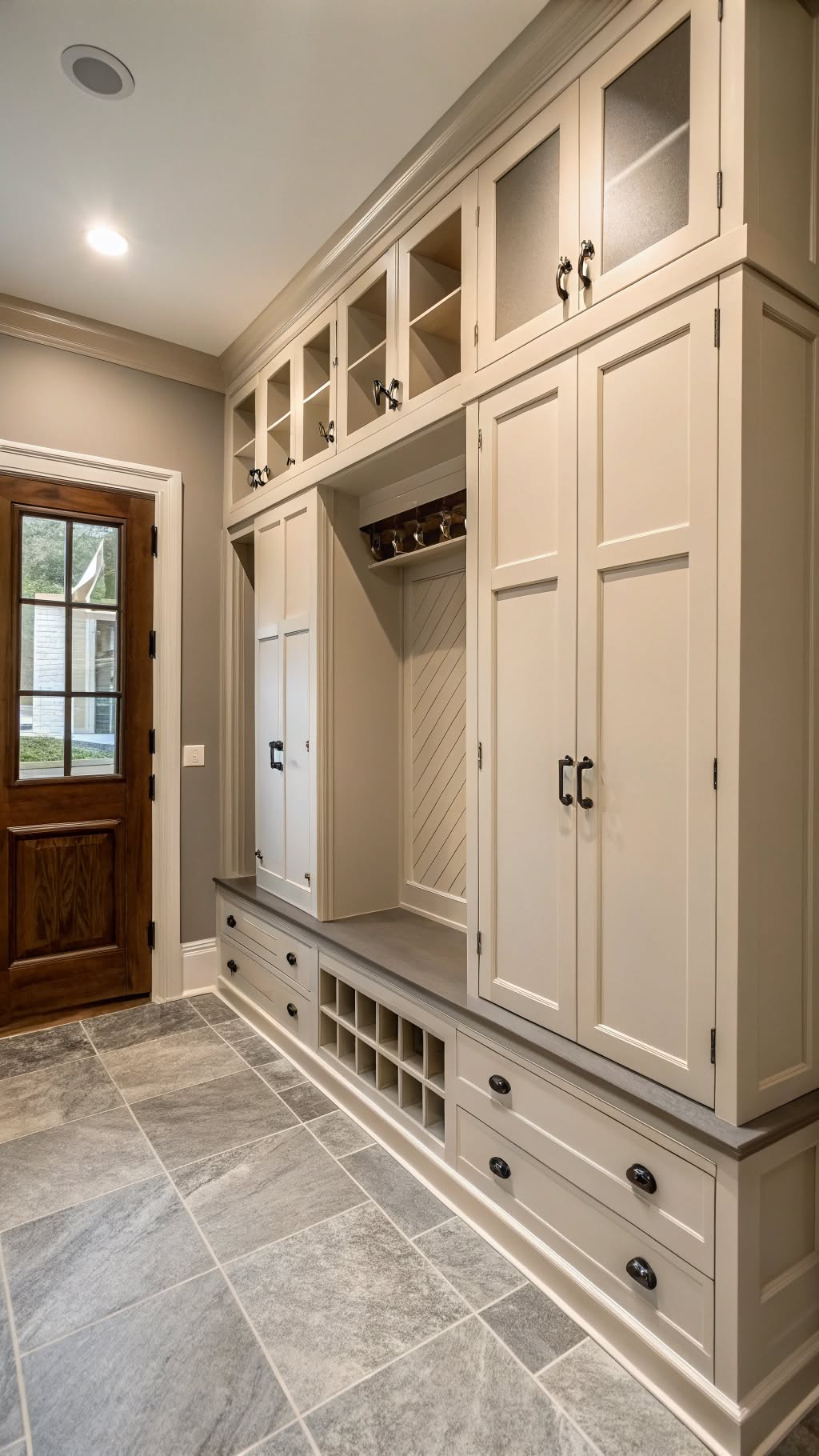
The space beneath your bench presents prime real estate for shoe and boot storage. Open cubbies allow for air circulation around damp footwear, helping prevent odors and mildew. For a more organized approach, consider pull-out baskets or trays that contain each family member’s shoes while allowing for easy access. If floor dirt is a concern, incorporate a washable boot tray or decorative pebble system that captures debris before it spreads throughout your home. Some bench designs include hinged lids for hidden storage—perfect for seasonal items or emergency supplies that don’t require daily access but should remain convenient to the entryway.
Above the bench, consider installing a system of individual cubbies that creates personalized drop zones for each family member. These designated spaces help contain the daily influx of belongings while teaching organizational skills to younger household members. Each cubby might include hooks for coats and bags, a shelf for hats and gloves, and perhaps a small basket for miscellaneous items like sunglasses or hand sanitizer. Label each space clearly using name tags, color-coding, or even photos for non-readers. This comprehensive bench-and-cubby system creates a natural rhythm to your coming-and-going routine: sit, remove shoes, hang coat, store accessories—all in one efficient sequence that keeps clutter contained and your home tidier overall.
Closed Storage Solutions: Concealing Clutter with Style
While open storage offers accessibility and visual reminders, closed cabinetry brings an element of polish and calm to busy entryways by hiding visual clutter. Cabinet doors instantly transform a chaotic collection of belongings into a streamlined, intentional design statement. In smaller spaces, this visual simplification can make the entire room feel larger and more organized, even when containing the same amount of items. Consider floor-to-ceiling cabinetry for maximum storage capacity, with adjustable shelving inside to accommodate everything from tall boots to small accessories. Soft-close hinges prevent slamming in this high-traffic area, while quality hardware elevates the entire look while standing up to daily use.

Closet systems offer another effective approach to concealed mudroom storage, particularly in entryways with existing closet space that can be optimized. Remove standard closet doors and replace them with bifold or sliding options that allow for easier access while taking up less floor space when open. Inside, implement a combination of hanging rods at varying heights, shelving units, and specialized organizers designed for entryway items. Consider shoe racks, umbrella stands, and dedicated drawers for smaller accessories. The beauty of a closet system lies in its ability to contain significant storage within a relatively compact footprint, making it ideal for homes where the mudroom doubles as a main hallway or entry.
For the most seamless appearance, consider custom or semi-custom cabinetry that integrates perfectly with your home’s architecture. Built-in units that extend from floor to ceiling maximize storage while creating a cohesive, intentional look. Incorporate a variety of cabinet depths to accommodate different items—deeper cabinets for bulky outerwear and sports equipment, shallower ones for accessories and smaller items. Don’t forget to include specialized features like pull-out drawers for hats and gloves, ventilated compartments for damp items, or charging stations for electronics. While closed storage requires more initial planning and typically represents a higher investment than open solutions, the resulting organization and aesthetic appeal can transform your mudroom from a chaotic collection point to a sophisticated, functional transition space that enhances your home’s overall design.
Small Space Solutions: Clever Storage for Limited Entryways
Not every home enjoys the luxury of a dedicated mudroom, but even the smallest entryway can incorporate smart storage solutions with creative thinking. When working with minimal square footage, every design decision must maximize functionality without overwhelming the space. Start by embracing wall-mounted options that keep the floor clear, creating the illusion of more space while still providing essential storage. Slim console tables with drawers, floating shelves with hooks underneath, and wall-mounted cabinets with fold-down fronts all offer storage without sacrificing precious floor area. Look for furniture specifically designed for narrow spaces—many manufacturers now offer entryway collections scaled for urban apartments and smaller homes.
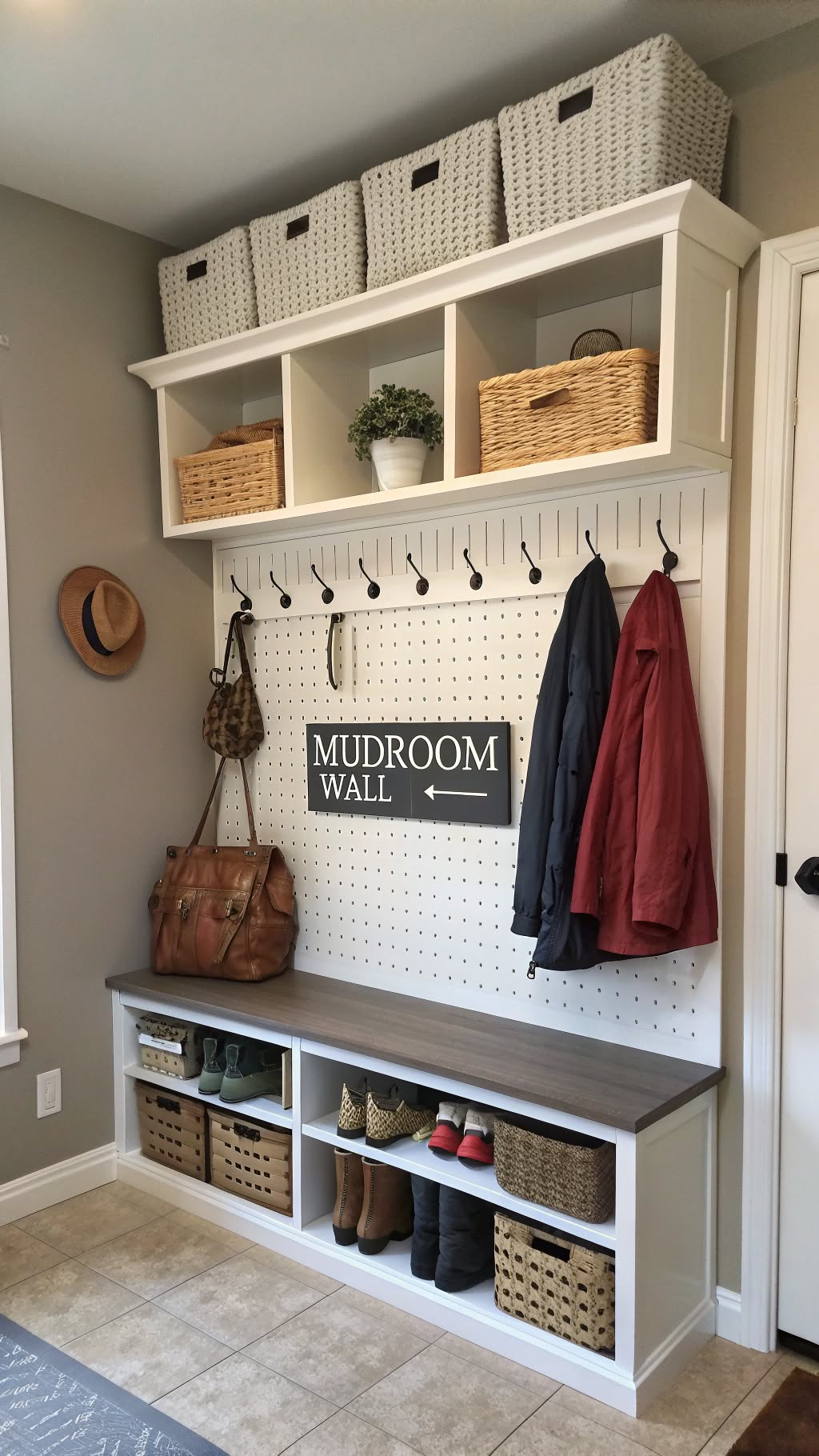
Multi-functional pieces become essential in limited entryways. Consider a narrow bench that includes both seating and shoe storage, wall hooks that fold flat when not in use, or mirror-cabinet combinations that serve both practical and storage purposes. Magnetic panels can hold keys and mail while taking up virtually no space. Door-mounted organizers utilize often-overlooked surfaces, turning the back of your entry door into valuable storage real estate. Even the smallest nook can become a functional “drop zone” with thoughtful planning—a simple shelf with hooks underneath and a small basket for keys might be all you need to prevent entryway chaos.
Visual strategies play an equally important role in making small mudroom areas feel more spacious and organized. Choose light colors for walls and storage pieces to create an airy feeling. Consider furniture with legs rather than pieces that sit directly on the floor—the visible space underneath creates a sense of openness. Mirrors not only serve a practical purpose for last-minute appearance checks but also reflect light and visually expand tight quarters. Keep decoration minimal but intentional, focusing on pieces that serve both functional and aesthetic purposes. Remember that in small spaces, editing is key—include only what you truly need and use daily, finding alternative storage locations for seasonal or occasionally used items. With thoughtful planning, even the most compact entryway can become an organized transition space that welcomes you home while keeping clutter at bay.
Conclusion
Creating the perfect mudroom entryway storage system isn’t just about containing clutter—it’s about designing a thoughtful transition space that supports your daily routines and welcomes you home. By assessing your specific household needs, maximizing vertical space, incorporating functional bench and cubby systems, balancing open and closed storage options, and implementing clever solutions for limited spaces, you can transform even the most challenging entryway into an organized, stress-reducing environment.
Remember that the most effective mudroom solutions combine practicality with personal style, creating a space that not only functions beautifully but also reflects your home’s aesthetic. Start by implementing one storage strategy at a time, observing how it works for your family, and then build upon your success. Consider seasonal adjustments to your system, rotating winter gear for summer essentials as needed. With thoughtful planning and strategic organization, your mudroom entryway will become more than just a storage area—it will serve as the functional foundation that helps your entire home run more smoothly. What mudroom challenge will you tackle first? Your organized, welcoming entryway awaits.
